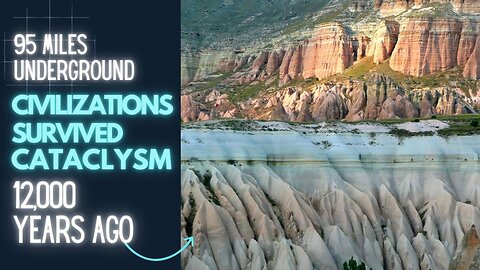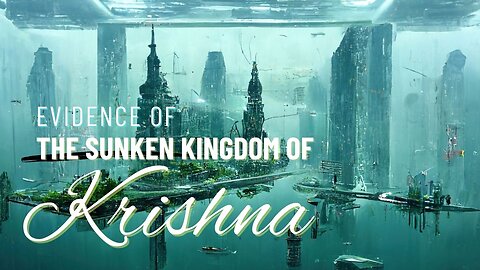
-
An 800-Million-Years-Old Sarcophagus Discovered In Siberia
 The Aquarius BusIn 1969, at the Siberian village of Rzhavchik in the Soviet Union, a remarkable event unfolded. Deep beneath the surface, a miner named Ivan Karnaukhov discovered an 800 million-year-old sarcophagus with a woman inside. The beauty lying in the sarcophagus soon became known as the Tisul Princess, with Tisul being the name of the district where the Rzhavchik village was located. Eventually, the high-ranking Soviet officials from the district arrived. Accompanying them were KGB agents. Just six months after the KGB confiscated the sarcophagus, a wave of misfortune swept over the village of Rzhavchik. Tragedy struck relentlessly, beginning with Ivan Karnaukhov, the man who discovered the sarcophagus of the Tissul Princess. His life was cut short in a harrowing accident. A month after his death, a miner met his demise by drowning. The sole survivor of these ominous events was geologist Vladimir Podreshetnikov, who revealed that the discovery of the Tisul princess was not the only one of its kind. Valery Malevanny, a retired KGB agent, stated that in 1973, additional sarcophagi were uncovered. These sarcophagi were transported to Moscow and were estimated to be around 200 million-year-old. SOURCE Universe Inside You1.76K views 6 comments
The Aquarius BusIn 1969, at the Siberian village of Rzhavchik in the Soviet Union, a remarkable event unfolded. Deep beneath the surface, a miner named Ivan Karnaukhov discovered an 800 million-year-old sarcophagus with a woman inside. The beauty lying in the sarcophagus soon became known as the Tisul Princess, with Tisul being the name of the district where the Rzhavchik village was located. Eventually, the high-ranking Soviet officials from the district arrived. Accompanying them were KGB agents. Just six months after the KGB confiscated the sarcophagus, a wave of misfortune swept over the village of Rzhavchik. Tragedy struck relentlessly, beginning with Ivan Karnaukhov, the man who discovered the sarcophagus of the Tissul Princess. His life was cut short in a harrowing accident. A month after his death, a miner met his demise by drowning. The sole survivor of these ominous events was geologist Vladimir Podreshetnikov, who revealed that the discovery of the Tisul princess was not the only one of its kind. Valery Malevanny, a retired KGB agent, stated that in 1973, additional sarcophagi were uncovered. These sarcophagi were transported to Moscow and were estimated to be around 200 million-year-old. SOURCE Universe Inside You1.76K views 6 comments -
Skeleton Lake - A Remote Lake Containing Over 800 Skeletons
 The Aquarius BusEvery once in a while, a mystery emerges that is so complex, finding answers only leads to more questions. That is exactly what happened at Skeleton Lake. - Nestled within the stunning Himalayan mountains lies the unassuming Roopkund Lake, sitting a breathtaking 15,000 ft above sea level. At first glance, this small body of water is just like a hundred others, long frozen under the often harsh and snowy conditions. But take a closer look, and a disturbing picture comes into focus; hundreds of human bones scattered around the base of the frozen water, piled high and bleached white after years of exposure. Some of the skeletons still have skin and hair on some parts, preserved for years due to the cold. - The most mysterious part was that these skeletons were all killed in the same manner, by a strike to the head from a blunt object. And not only that, but the skeletons belonged to at least three different groups, the first one being from the 7th century AD, the second from the 10th century, and the third - from the 19th century. - How was this possible? How could hundreds of people, separated by thousand years, have all been killed in the same way, at the exact same place? -653 views 2 comments
The Aquarius BusEvery once in a while, a mystery emerges that is so complex, finding answers only leads to more questions. That is exactly what happened at Skeleton Lake. - Nestled within the stunning Himalayan mountains lies the unassuming Roopkund Lake, sitting a breathtaking 15,000 ft above sea level. At first glance, this small body of water is just like a hundred others, long frozen under the often harsh and snowy conditions. But take a closer look, and a disturbing picture comes into focus; hundreds of human bones scattered around the base of the frozen water, piled high and bleached white after years of exposure. Some of the skeletons still have skin and hair on some parts, preserved for years due to the cold. - The most mysterious part was that these skeletons were all killed in the same manner, by a strike to the head from a blunt object. And not only that, but the skeletons belonged to at least three different groups, the first one being from the 7th century AD, the second from the 10th century, and the third - from the 19th century. - How was this possible? How could hundreds of people, separated by thousand years, have all been killed in the same way, at the exact same place? -653 views 2 comments -
Advanced City Wiped Out From Atomic Explosion In 2600 B.C. - Name Of City Means 'Mound of The Dead'!
 The Aquarius BusStory Documentation Noted In The Mahabarata - The Mahābhārata is the longest epic poem known and has been described as "the longest poem ever written". Its longest version consists of over 100,000 śloka or over 200,000 individual verse lines, and long prose passages. - At about 1.8 million words in total, the Mahābhārata is roughly ten times the length of the Iliad and the Odyssey combined, or about four times the length of the Rāmāyaṇa. - Ancient Astronaut Theorists believe that Garuda caused a brutal nuclear attack on a small town in southern Pakistan, in this clip from Season 3, "Aliens and Monsters. -659 views
The Aquarius BusStory Documentation Noted In The Mahabarata - The Mahābhārata is the longest epic poem known and has been described as "the longest poem ever written". Its longest version consists of over 100,000 śloka or over 200,000 individual verse lines, and long prose passages. - At about 1.8 million words in total, the Mahābhārata is roughly ten times the length of the Iliad and the Odyssey combined, or about four times the length of the Rāmāyaṇa. - Ancient Astronaut Theorists believe that Garuda caused a brutal nuclear attack on a small town in southern Pakistan, in this clip from Season 3, "Aliens and Monsters. -659 views -
95 Miles of Underground Civilizations That Survived A Cataclysm 12,000 Years Ago
 The Aquarius BusBeneath the Cappadocia region in Turkey, there is an entire ancient civilization that built underground cities like Derinkuyu, Kaimakli, Ozkonak, and Nevsehir. Is it then possible that the underground cities found across Turkey were built as underground shelters to survive the extreme weather events of Younger Dryas, as recorded in the ancient Zoroastrian Vendidad text? - And if so, then perhaps it is possible that, having survived the deep freeze, humans returned to the surface and memorialized their survival in the Gobekli Tepe monument, even providing a record of the exact date the event had taken place through a specific astronomical alignment carved on the Vulture Stone. - Think about what this would mean – no less than the existence of an advanced ancient civilization prior to the Younger Dryas event more than 12,000 years ago, far before any civilization recorded in our history books today. -868 views
The Aquarius BusBeneath the Cappadocia region in Turkey, there is an entire ancient civilization that built underground cities like Derinkuyu, Kaimakli, Ozkonak, and Nevsehir. Is it then possible that the underground cities found across Turkey were built as underground shelters to survive the extreme weather events of Younger Dryas, as recorded in the ancient Zoroastrian Vendidad text? - And if so, then perhaps it is possible that, having survived the deep freeze, humans returned to the surface and memorialized their survival in the Gobekli Tepe monument, even providing a record of the exact date the event had taken place through a specific astronomical alignment carved on the Vulture Stone. - Think about what this would mean – no less than the existence of an advanced ancient civilization prior to the Younger Dryas event more than 12,000 years ago, far before any civilization recorded in our history books today. -868 views -
This Mysterious Civilization pre-dates the Sumerians & Egyptians
 The Aquarius BusWith great symbols representing majesty and power, mythical gods and pharaohs, and great technological inventions that changed the world, we are used to seeing Egypt and Sumer as the oldest and most advanced civilizations in history. - However, recent scientific research indicates that a mysterious ancient civilization located between Pakistan and India predates these two incredible cultures. - Indeed, researchers believe that this civilization, known as the Harappan civilization or the Indus Valley civilization, is around 8,000 years old, which means that it's even older than the great Sumerian civilization. Its most famous city, Mohenjo-Daro, is a clear example of a well-established and highly advanced urban center, which includes sewage systems, roads, well-organized houses, agriculture, and artwork, among other things. However, even with all the information that researchers already have about these ancient people, the Harappan civilization also remains one of the most mysterious in history: - Its script has not yet been deciphered, its urban planning and irrigation systems were more advanced even than most cities in modern India, and the civilization suddenly disappeared for reasons that are still not entirely clear. How did the Harappan civilization achieve such a degree of cultural and technological development? What was their secret? - Did someone help them, or were they the descendants of an even older advanced civilization? And what is the mystery surrounding its sudden disappearance? -574 views
The Aquarius BusWith great symbols representing majesty and power, mythical gods and pharaohs, and great technological inventions that changed the world, we are used to seeing Egypt and Sumer as the oldest and most advanced civilizations in history. - However, recent scientific research indicates that a mysterious ancient civilization located between Pakistan and India predates these two incredible cultures. - Indeed, researchers believe that this civilization, known as the Harappan civilization or the Indus Valley civilization, is around 8,000 years old, which means that it's even older than the great Sumerian civilization. Its most famous city, Mohenjo-Daro, is a clear example of a well-established and highly advanced urban center, which includes sewage systems, roads, well-organized houses, agriculture, and artwork, among other things. However, even with all the information that researchers already have about these ancient people, the Harappan civilization also remains one of the most mysterious in history: - Its script has not yet been deciphered, its urban planning and irrigation systems were more advanced even than most cities in modern India, and the civilization suddenly disappeared for reasons that are still not entirely clear. How did the Harappan civilization achieve such a degree of cultural and technological development? What was their secret? - Did someone help them, or were they the descendants of an even older advanced civilization? And what is the mystery surrounding its sudden disappearance? -574 views -
Destructive Great Reset in The Forbidden City During the Ming Dynasty
 The Aquarius BusLooking into the Ming Dynasty and possible traces of a destructive event - The Ming dynasty officially the Great Ming, was an imperial dynasty of China, ruling from 1368 to 1644 following the collapse of the Mongol-led Yuan dynasty. The Ming dynasty was the last imperial dynasty of China ruled by the Han people, the majority ethnic group in China. Although the primary capital of Beijing fell in 1644 to a rebellion led by Li Zicheng (who established the short-lived Shun dynasty), numerous rump regimes ruled by remnants of the Ming imperial family—collectively called the Southern Ming—survived until 1662. - The Ming dynasty's founder, the Hongwu Emperor (r. 1368–1398), attempted to create a society of self-sufficient rural communities ordered in a rigid, immobile system that would guarantee and support a permanent class of soldiers for his dynasty; the empire's standing army exceeded one million troops and the navy's dockyards in Nanjing were the largest in the world. - He also took great care breaking the power of the court eunuchs and unrelated magnates, investing his many sons throughout China and attempting to guide these princes through the Huang-Ming Zuxun, a set of published dynastic instructions. - This failed when his teenage successor, the Jianwen Emperor, attempted to curtail his uncles' power, prompting the Jingnan campaign, an uprising that placed the Prince of Yan upon the throne as the Yongle Emperor in 1402. - The rise of new emperors and new factions diminished such extravagances; the capture of the Emperor Yingzong of Ming during the 1449 Tumu Crisis ended them completely. The imperial navy was allowed to fall into disrepair while forced labor constructed the Liaodong palisade and connected and fortified the Great Wall into its modern form. - By the 16th century, however, the expansion of European trade – albeit restricted to islands near Guangzhou such as Macau – spread the Columbian Exchange of crops, plants, and animals into China, introducing chili peppers to Sichuan cuisine and highly productive maize and potatoes, which diminished famines and spurred population growth. The growth of Portuguese, Spanish, and Dutch trade created new demand for Chinese products and produced a massive influx of Japanese and American silver. -423 views
The Aquarius BusLooking into the Ming Dynasty and possible traces of a destructive event - The Ming dynasty officially the Great Ming, was an imperial dynasty of China, ruling from 1368 to 1644 following the collapse of the Mongol-led Yuan dynasty. The Ming dynasty was the last imperial dynasty of China ruled by the Han people, the majority ethnic group in China. Although the primary capital of Beijing fell in 1644 to a rebellion led by Li Zicheng (who established the short-lived Shun dynasty), numerous rump regimes ruled by remnants of the Ming imperial family—collectively called the Southern Ming—survived until 1662. - The Ming dynasty's founder, the Hongwu Emperor (r. 1368–1398), attempted to create a society of self-sufficient rural communities ordered in a rigid, immobile system that would guarantee and support a permanent class of soldiers for his dynasty; the empire's standing army exceeded one million troops and the navy's dockyards in Nanjing were the largest in the world. - He also took great care breaking the power of the court eunuchs and unrelated magnates, investing his many sons throughout China and attempting to guide these princes through the Huang-Ming Zuxun, a set of published dynastic instructions. - This failed when his teenage successor, the Jianwen Emperor, attempted to curtail his uncles' power, prompting the Jingnan campaign, an uprising that placed the Prince of Yan upon the throne as the Yongle Emperor in 1402. - The rise of new emperors and new factions diminished such extravagances; the capture of the Emperor Yingzong of Ming during the 1449 Tumu Crisis ended them completely. The imperial navy was allowed to fall into disrepair while forced labor constructed the Liaodong palisade and connected and fortified the Great Wall into its modern form. - By the 16th century, however, the expansion of European trade – albeit restricted to islands near Guangzhou such as Macau – spread the Columbian Exchange of crops, plants, and animals into China, introducing chili peppers to Sichuan cuisine and highly productive maize and potatoes, which diminished famines and spurred population growth. The growth of Portuguese, Spanish, and Dutch trade created new demand for Chinese products and produced a massive influx of Japanese and American silver. -423 views -
Megalithic Floating City Built By Ancient Giants
 The Aquarius BusIn the middle of the endless expanse of the Pacific Ocean in Micronesia, there lies a megalithic site as inexplicable and mysterious as any on earth, a site that has been a breeding ground of legends and secrets for centuries. - And yet, despite its status as “one of the most enigmatic and unique ancient sites in the world,” most people have probably never heard the name – Nan Madol. There is perhaps a good reason for this… - The Micronesian island of Pohnpei is truly in the middle of nowhere. Off its shores to the east lie more than 5,000 miles of open ocean until you hit California, while to the west, another 2,500 miles of ocean to Manila in the Philippines. - In the shallow waters off its eastern shores stands an unfathomable stone complex – 92 artificial islets built on top of a coral reef over an area a mile long, all linked by an elaborate network of stone-lined canals. These stone canals give the place its name – Nan Madol, which translates to “within the intervals.” -486 views
The Aquarius BusIn the middle of the endless expanse of the Pacific Ocean in Micronesia, there lies a megalithic site as inexplicable and mysterious as any on earth, a site that has been a breeding ground of legends and secrets for centuries. - And yet, despite its status as “one of the most enigmatic and unique ancient sites in the world,” most people have probably never heard the name – Nan Madol. There is perhaps a good reason for this… - The Micronesian island of Pohnpei is truly in the middle of nowhere. Off its shores to the east lie more than 5,000 miles of open ocean until you hit California, while to the west, another 2,500 miles of ocean to Manila in the Philippines. - In the shallow waters off its eastern shores stands an unfathomable stone complex – 92 artificial islets built on top of a coral reef over an area a mile long, all linked by an elaborate network of stone-lined canals. These stone canals give the place its name – Nan Madol, which translates to “within the intervals.” -486 views -
Walk Through This Vast Network of Turkish Underground Cities
 The Aquarius BusWere underground cities like Derinkuyu in the Cappadocia region of Turkey built by ancient yet advanced beings, maybe not of this Earth? Were these underground cities built by humans, or were they a gift from pre-diluvian gods to help humans survive the end of the world?332 views
The Aquarius BusWere underground cities like Derinkuyu in the Cappadocia region of Turkey built by ancient yet advanced beings, maybe not of this Earth? Were these underground cities built by humans, or were they a gift from pre-diluvian gods to help humans survive the end of the world?332 views -
Definitive Evidence of the Sensational Sunken Kingdom of Krishna
 The Aquarius BusWill recent evidence help us uncover the original Mythological Gateway that once stood as a shining and sophisticated city 12,000 years ago before the Great Flood? - Examining the lost kingdom of Krishna, scholars offer insight on recent archeological discoveries off the coasts of India in connection to flying vimanas, advanced energy weaponry, and Earth-altering catastrophes. These new discoveries could corroborate stories of battles in the Mahābhārata to reveal realities of a time once considered myth.305 views
The Aquarius BusWill recent evidence help us uncover the original Mythological Gateway that once stood as a shining and sophisticated city 12,000 years ago before the Great Flood? - Examining the lost kingdom of Krishna, scholars offer insight on recent archeological discoveries off the coasts of India in connection to flying vimanas, advanced energy weaponry, and Earth-altering catastrophes. These new discoveries could corroborate stories of battles in the Mahābhārata to reveal realities of a time once considered myth.305 views -
Dog-Headed Men Were Documented by Explorers Marco Polo & Christopher Columbus
 The Aquarius Bus-- As strange and disturbing as it may seem, throughout history, there have been numerous accounts of dog-headed people living in distant lands. You’ve probably seen images of cynocephalus before.. “cyno”, means dog- and “cephalus” means “of the head.” The characteristic of cynocephaly, or cynocephalus, having the head of a dog or jackal, is a widely documented phenomenon existing in many different forms and contexts. The literal meaning of "cynocephaly" is "dog-headed"; however, that this refers to a human body with a dog head is implied. Such cynocephalics are known in mythology and legend from many parts of the world, including ancient Egypt, India, Greece, and China. In addition, documented, concise notes exist from the writings of Christopher Columbus along with Marco Polo detailing their own sightings. Reports of dog-headed races can also be traced back to Greek antiquity. In the fifth century BC, the Greek physician Ctesias, in his Indica, wrote a detailed report on the existence of cynocephali in India. Similarly, the Greek traveler Megasthenes claimed to know about dog-headed people in India who lived in the mountains, communicated through barking, wore the skins of wild animals and lived by hunting. Claudius Aelianus also mentioned the dog-headed tribes in India, and he, too, wrote that they are of human shape and clothed in the skins of beasts. He also added that although they have no speech and howled to communicate, they were capable of understanding the Indian language. Herodotus reports claims by ancient Libyans that such creatures inhabit the east of their lands, as well as headless men and various other anomalies. --556 views 1 comment
The Aquarius Bus-- As strange and disturbing as it may seem, throughout history, there have been numerous accounts of dog-headed people living in distant lands. You’ve probably seen images of cynocephalus before.. “cyno”, means dog- and “cephalus” means “of the head.” The characteristic of cynocephaly, or cynocephalus, having the head of a dog or jackal, is a widely documented phenomenon existing in many different forms and contexts. The literal meaning of "cynocephaly" is "dog-headed"; however, that this refers to a human body with a dog head is implied. Such cynocephalics are known in mythology and legend from many parts of the world, including ancient Egypt, India, Greece, and China. In addition, documented, concise notes exist from the writings of Christopher Columbus along with Marco Polo detailing their own sightings. Reports of dog-headed races can also be traced back to Greek antiquity. In the fifth century BC, the Greek physician Ctesias, in his Indica, wrote a detailed report on the existence of cynocephali in India. Similarly, the Greek traveler Megasthenes claimed to know about dog-headed people in India who lived in the mountains, communicated through barking, wore the skins of wild animals and lived by hunting. Claudius Aelianus also mentioned the dog-headed tribes in India, and he, too, wrote that they are of human shape and clothed in the skins of beasts. He also added that although they have no speech and howled to communicate, they were capable of understanding the Indian language. Herodotus reports claims by ancient Libyans that such creatures inhabit the east of their lands, as well as headless men and various other anomalies. --556 views 1 comment








